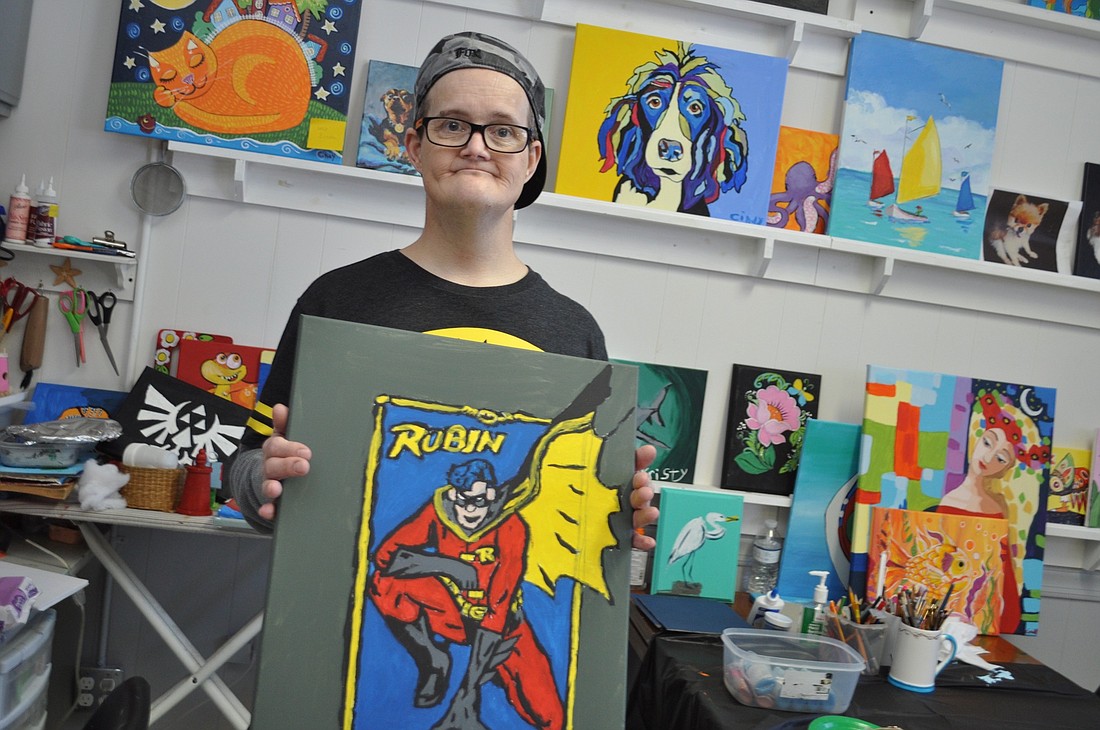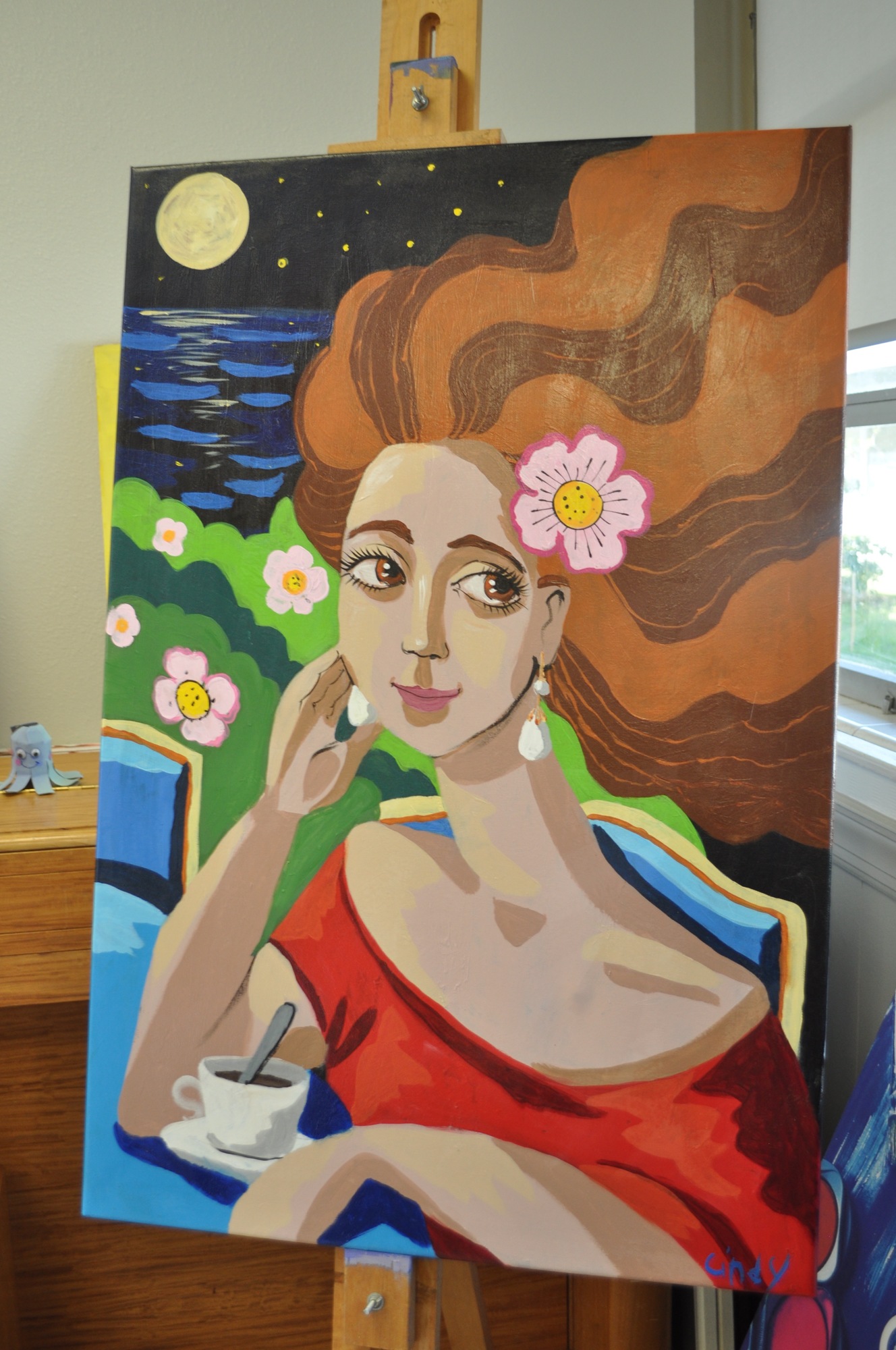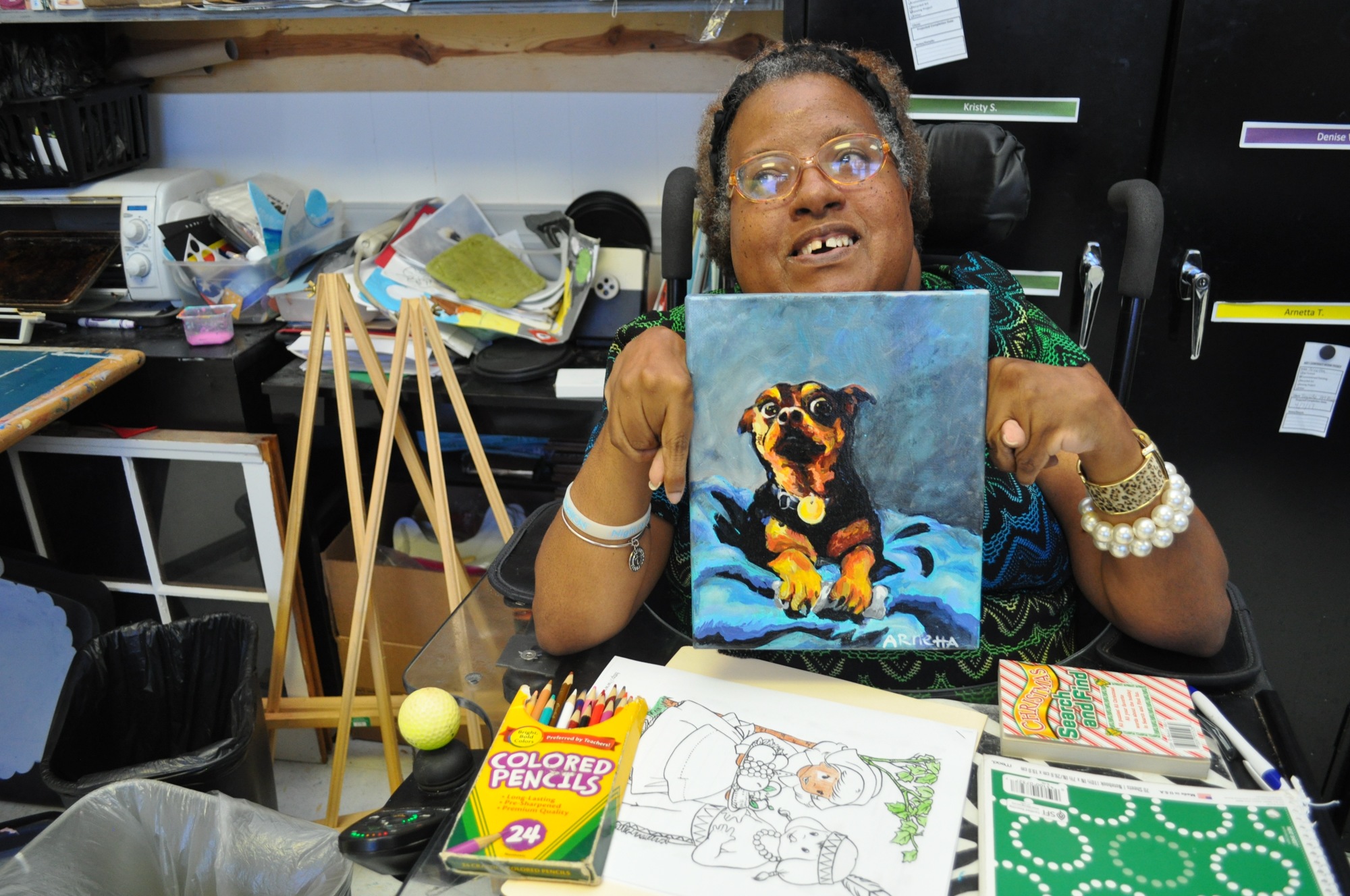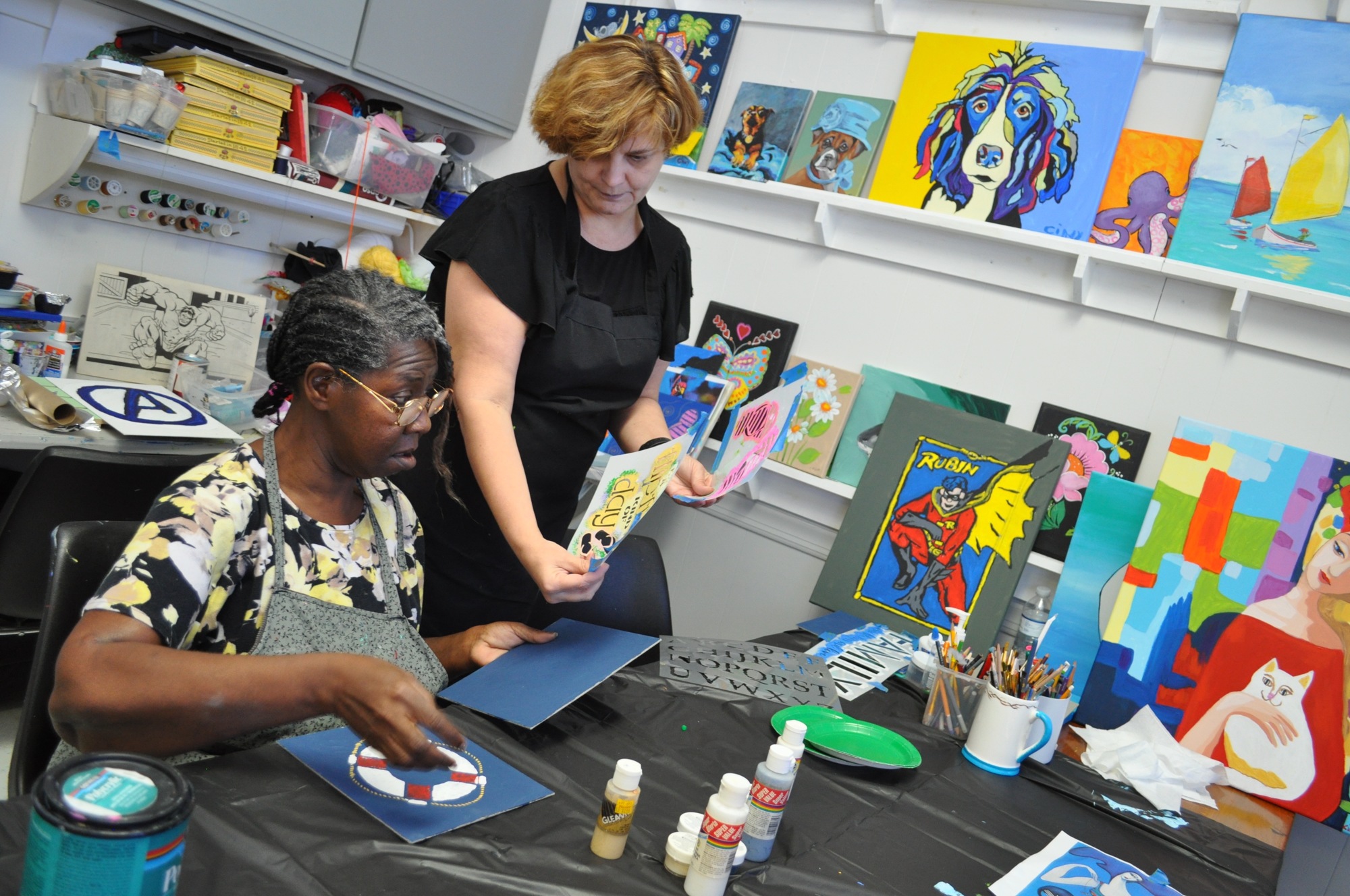- April 26, 2024
-
-
Loading

Loading

There’s pop music thumping from the cafeteria at Easter Seals Southwest Florida. Katy Perry and Lady Gaga anthems are floating through a crack in the door, along with the smell of breakfast. Overzealous preschoolers from the organization’s Lily School for Child Development are scattering back to class having just completed a tree craft, the remnants of which are strewn across three tables. Art instructor Viktoria Bridgeford bends to gather construction paper leaves and uncapped glue sticks, a black smock tied around her waist.
“They have an attention span of 15 minutes and no more than that,” Bridgeford says in the sweet, soft-spoken Russian accent everyone at Easter Seals has gotten used to. “That’s how it is when they’re little. They are hyper.”
A handful of adults float into the instructor’s art studio. All of them have special needs and paint at different levels. Three of them are deaf. Two of them are mute. One woman in a wheelchair named Arnetta, who works with a paintbrush between her knuckles because her hands are curled into fists, begins work on a trio of penguins. A man in a Batman T-shirt named Jeff reaches for his favorite canvas –– a portrait he painted of Batman’s sidekick, Robin. Jeff, who is deaf and has Down syndrome, gestures toward a painting of an Avengers logo and flashes an enthusiastic thumbs-up when his point is taken. He loves superheroes.

“Every day is something different in here,” Bridgeford says. “Every day they learn something new. They don’t think about their pain or disabilities. They think about the art.”
A woman named Patty ties on an apron she customized herself. Underneath her name and a smattering of purple flowers, she points to the word, “deaf,” which she wrote in fabric paint as a kind of gentle reminder for people who might forget.
“The ones who are deaf or mute have a lot to say with their art,” Bridgeford says, giving Patty’s shoulder an affectionate squeeze. Although she can’t hear what the instructor said, Patty smiles and nods in agreement. “They observe so much. It’s like they can finally express it.”
A native of North Russia, Bridgeford, 53, joined Easter Seals two and a half years ago. Before that, she taught art at Manatee Technical College in Bradenton, where she lived (and worked) out of a studio in The Village of the Arts.
Evidence of her impact on the Easter Seals art program is everywhere: from Culver’s Restaurant on University Parkway, where the organization enjoys pro-bono art representation, to the colorful works-in-progress spilling out of the Seal studio on the Braden Avenue campus.

“Viktoria is able to break the art down into small steps,” says Jeannine Ryan, who serves as the nonprofit’s arts program manager, in addition to the President and CEO’s executive assistant. “Before Viktoria they were doing a lot of basic abstract stuff, a lot of collages. She pushed them harder to do more. They were able to step it up with her guidance. She tells them, ‘don’t think about the whole painting at once. Think about it as individual steps.’”
For a lot of the adults navigating the halls of the Easter Seals campus, this could also be a metaphor for life.
The 71-year-old North Sarasota organization is enjoying a creative renaissance under Bridgeford’s tutelage. In October, the Easter Seals landed a high profile art show at State of the Arts Gallery in downtown Sarasota –– their first major gallery opening. The event, which featured a live painting by Arnetta, brought in $5,200 in art sales, 70 percent of which went directly to the artists. About a dozen of Bridgeford’s adult students had pieces in the show –– and almost every one of those canvases sold.
“People have fallen in love with them,” Ryan says of the artists. “The art has been a nice peek into their lives, especially for those people who weren’t aware of this population. It’s like we’re getting past the fact that these people have a disability and moving onto something they have in common: the love of art.”
Ryan sees the program as an important fundraising and community outreach tool. In addition to acrylic painting, the organization also offers photography and some jewelry making, but Ryan would like to add more to the rotation, including pottery and ceramics.

They need a bigger studio and some volunteers to help lighten Bridgeford’s load. Right now the instructor is juggling a full-time schedule and dozens of students with scant volunteer help.
“Selling the work has had a tremendous impact on their self-esteem,” Ryan says. “They’re good at it and it’s giving them purpose.”
The average canvas sells for around $50. The larger, more sophisticated pieces cost twice as much. Those that can speak will tell you how good it feels to make money off their art, even though the real reward is in creating it.
It took Bridgeford four months to convince one artist –– an outspoken 31-year-old woman named Ashley who lives with spina bifida –– to wheel her chair into the studio. Suffering with depression and anxiety, Ashley resisted, unaware of the fact that under the anger and nagging melancholy, she had the ability to pump out gallery-worthy work.

“I’m a perfectionist,” Bridgeford says. “I always want more for them because I know they’ve got it in them.”
Ashley is now one of the program’s most prolific artists. In October, she earned $240 after selling several pieces, including her favorite work–– an image of a fish in a wheelchair –– at the State of the Arts Gallery show.
“It’s helping me relax,” Ashley says. “I come in here all stubborn and mad and I leave the room totally relaxed.”
Written by Contributor Heidi Kurpiela